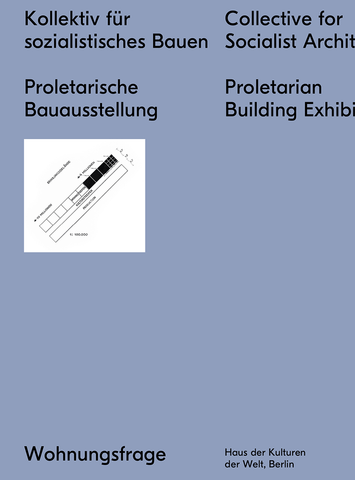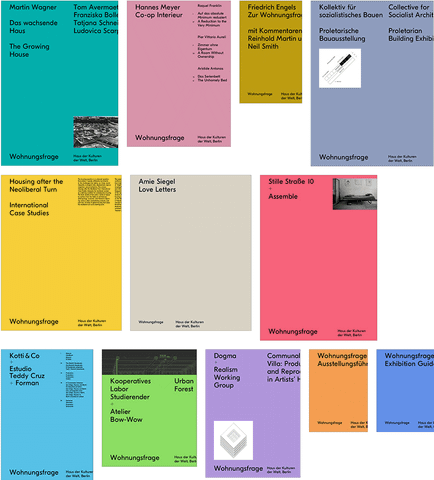Collective for Socialist Architecture: Proletarian Building Exhibition

Texts: Heinz Deutschland, Tatjana Efrussi, Jesko Fezer, Thomas Flierl, Gregor Harbusch, Christian Hiller, Alexandra Nehmer, Philipp Oswalt, Pedro Moreira, Daniel Weiss, Karin Wilhelm, Andreas Zeese
German / English
ISBN 978-3-95905-047-0
EUR 24.00
Available at bookstores, the shop at the Haus der Kulturen der Welt and online at Spector Books.
The Proletarian Building Exhibition took place in Berlin in 1931 and was developed by the Collective for a Socialist Architecture, who intended it to stand in opposition to the German Building Exhibition. Wohnungsfrage has revisited original historical documents and made them the focus of discussion in a conference run in conjunction with the project bauhaus. Research into individuals like Arthur Korn, Alexander Altberg, and Hermann Duncker and their links to projects like the CIAM, the Marxistische Arbeiterschule, and the Bauhaus, as well as their connections with the USSR, demonstrates the degree to which the networks and political attitudes of modernist architecture were interwoven with one another.
*
In an empty factory unit tucked away in a rear courtyard in Berlin’s Köpenicker Straße an exhibition was mounted with the humblest of resources in 1931. Conceived as a riposte to the bourgeois Deutsche Bauausstellung (German Building Exhibition) staged in the west of the city, it marked the first action of a group of revolutionary architects, builders, and students, who had joined together to form the Kollektiv für sozialistisches Bauen under the architect Arthur Korn.
Highlighting the catastrophic living conditions in the major conurbations, the Proletarische Bauausstellung (Proletarian Building Exhibition) also furnished a brief world history of architecture as an instrument of power, cast doubt on whether a solution to the housing question could be found within the capitalist system, and unveiled planning approaches imported from the then-Soviet Union. The show was aimed specifically at the networks of modernist architects. Members of the Congrès internationaux d’architecture moderne (International Congresses of Modern Architecture— CIAM), whose preparation committee was convening at the same time in Berlin ahead of the Fourth Congress to be held in Moscow, not only visited the exhibition but also criticized it. Once again, housing had become a fiercely contested arena, and the brief interlude in which political differences had been brushed aside in the euphoric embrace of modernism was at an end.
At a time of running street battles between units of the paramilitary SA and Communist cells, the organizers of the exhibitions presented a polemical juxtaposition of the difference between bourgeois and proletarian architecture. Political and social positioning were deemed to be the basic condition for an architectural stance which was seeking alternatives to a technologically driven and social-reformist modernism. Presenting short contemporary statements and original documents, this volume reconstructs the architectural and sociopolitical significance of this event.

